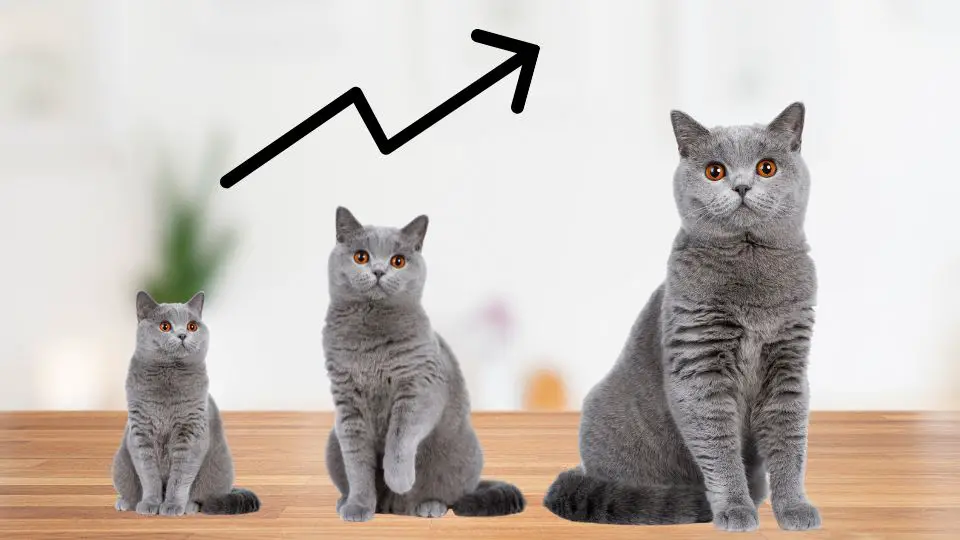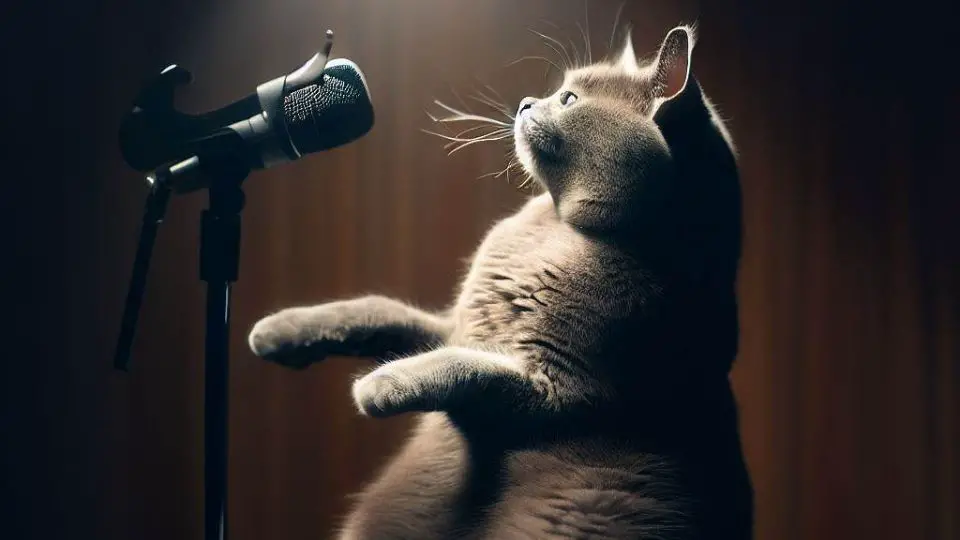Bringing a British Shorthair kitten into your home is an exciting and joyful experience. These adorable felines have unique characteristics and require specific care to ensure their health, happiness, and overall well-being.
From creating a safe environment to providing proper nutrition and socialization, taking care of British Shorthair kittens involves a combination of love, attention, and responsible care.
In this article, we will explore essential tips and guidelines for looking after British Shorthair kittens, helping you provide the best possible care for your new furry companion.
Creating a Safe and Comfortable Environment
When welcoming a British Shorthair kitten, it’s important to prepare a designated space where they can feel safe and secure. This space can be a separate room or a smaller area within a room, such as a playpen or a kitten-proofed section. Set up their litter box, food and water dishes, and a cozy bed in this area. Make sure it’s easily accessible and free from potential hazards.
Kitten-proof the living area
Just like human babies, kittens are naturally curious and love to explore their surroundings. To keep them safe, it’s crucial to kitten-proof your living area. Remove any toxic plants, chemicals, small objects, or sharp items that they could swallow or injure themselves with.
Secure loose cords, cover electrical outlets, and ensure that fragile or valuable items are kept out of their reach. Block off any areas that may pose a danger, such as staircases or rooms that are off-limits.
Provide a cozy sleeping area
Creating a comfortable and cozy sleeping area for your British Shorthair kitten is essential for their well-being. Choose a soft and warm bed or blanket where they can curl up and feel secure. Place the bed in a quiet corner of their designated space, away from noisy areas or drafty spots.
Consider providing a snug hiding place, such as a covered bed or a cozy cat cave, where they can retreat and have a sense of privacy.
Feeding and Nutrition
Selecting the right food for your British Shorthair kitten is vital for their overall health. Look for high-quality kitten food that is specifically formulated to meet the nutritional requirements of growing cats. Opt for brands that use real meat as the primary ingredient and avoid those with excessive fillers, artificial additives, or by-products. Consult with your veterinarian for recommendations based on your kitten’s specific needs.
Setting a consistent feeding schedule helps regulate your British Shorthair kitten’s appetite and digestion. Divide their daily food portion into several small meals throughout the day, especially during the first few months of their life. Kittens usually require frequent feeding, typically three to four times a day.
As they grow older, you can gradually transition to a feeding schedule of two to three times a day. Stick to the established schedule to ensure your kitten receives the necessary nutrients at regular intervals.
Establish a regular feeding schedule
Portion control is crucial to prevent overfeeding and maintain a healthy weight for your British Shorthair kitten. Follow the feeding guidelines provided by the kitten food manufacturer and adjust portion sizes based on your kitten’s age, weight, and activity level. Use a designated measuring cup or scale to accurately measure their food.
Avoid free-feeding or leaving food out all day, as it can lead to overeating and potential weight issues. Regularly monitor your kitten’s body condition and consult with your veterinarian if adjustments to portion sizes are needed.
Health and Veterinary Care
Vaccinations are a crucial part of preventing various infectious diseases in kittens. Consult with your veterinarian to determine an appropriate vaccination schedule for your British Shorthair kitten, based on their age and local disease prevalence. Common vaccinations include those for feline viral rhinotracheitis, calicivirus, panleukopenia, and rabies.
Additionally, deworming treatments help eliminate internal parasites such as roundworms, hookworms, and tapeworms. Follow your veterinarian’s recommendations for the frequency and timing of deworming medications.
Regular check-ups with a veterinarian
Regular veterinary check-ups are essential to monitor your British Shorthair kitten’s health and detect any potential issues early on. Your veterinarian will conduct thorough physical examinations, assess their growth, check for signs of illness, and provide necessary preventive care.
These check-ups also present an opportunity to discuss any concerns or questions you may have about your kitten’s well-being, behavior, or nutrition. Aim for regular visits, typically every 4 to 6 weeks during the first few months, and then annually for routine check-ups thereafter.
Spaying or neutering the kitten
Spaying or neutering your British Shorthair kitten is a responsible decision that offers numerous health benefits. Spaying (for females) and neutering (for males) help prevent unwanted litters, reduce the risk of certain cancers, and decrease behavioral problems associated with mating instincts.
Consult with your veterinarian to determine the appropriate age for the procedure, usually between 4 and 6 months. Your veterinarian will guide you through the process and provide instructions for pre- and post-operative care.
Grooming and Hygiene
Maintaining proper grooming and hygiene practices is essential to keep your British Shorthair kitten looking and feeling their best.
Brush their coat regularly
British Shorthair cats have dense, plush coats that require regular brushing to keep them clean and free from mats. Use a soft-bristle brush or a grooming glove to gently remove loose hair and prevent tangles.
Brushing not only helps distribute natural oils throughout the coat but also reduces the risk of hairballs. Aim for a brushing session at least once or twice a week, and increase the frequency during shedding seasons.
Introduce nail trimming and teeth brushing
Nail trimming and teeth brushing are essential aspects of your British Shorthair kitten’s grooming routine. To trim their nails, use specially designed cat nail clippers and trim the tips, taking care not to cut too close to the quick. Start by getting your kitten accustomed to having their paws touched, and gradually introduce nail trimming as a positive experience.
Additionally, brushing your kitten’s teeth helps prevent dental issues later in life. Use a soft-bristled toothbrush and cat-friendly toothpaste to gently brush their teeth in a circular motion.
Ensure a clean litter box and proper litter training
Maintaining a clean litter box is crucial for your British Shorthair kitten’s hygiene and overall well-being. Scoop the litter box daily to remove waste and clumps, and completely replace the litter at least once a week. Provide a litter box that is large enough for your kitten to move comfortably and ensure easy access to it.
Proper litter training involves placing your kitten in the litter box after meals or naps and praising them when they use it correctly. Be patient and consistent,
Socialization and Playtime
Spending quality time with your kitten is a vital component of their overall happiness and development. It helps them feel loved, secure, and valued as a member of your family. Regular interaction and attention from their human companions strengthen the bond between you and your kitten, fostering trust and mutual understanding. Quality time also provides an opportunity to observe their behaviors, preferences, and unique personality traits, allowing you to cater to their specific needs and provide a nurturing environment.
Engaging Activities for Quality Time:
- Gentle Petting and Cuddling: British Shorthair cats are known for their affectionate nature and love to be gently petted and cuddled. Take the time to stroke their soft fur, giving them soothing massages and head scratches. This physical contact promotes relaxation, reduces stress, and deepens your emotional connection.
- Playtime Fun: Engage your kitten in play sessions that cater to their playful instincts. Use interactive toys, such as feather wands or balls, to encourage chasing and pouncing behaviors. Rotate their toy selection to keep them stimulated and entertained. Active play not only provides exercise but also strengthens the bond between you and your kitten through shared enjoyment.
- Exploring Together: Allow your kitten to explore their surroundings while under your watchful eye. Supervised exploration helps them feel safe and builds their confidence. Create a kitten-friendly space with stimulating objects to investigate, such as cardboard boxes, tunnels, or scratching posts. Join them in their exploration, offering encouragement and gentle guidance.
- Quality Conversation: British Shorthair cats are known for their quiet and attentive nature. Engage in quality conversation by speaking to your kitten in a soothing voice. They enjoy hearing your voice, and it creates a sense of companionship. Share stories, observations, or simply talk about your day as you spend time together.
Engage in interactive play sessions
Interactive play sessions are vital for your British Shorthair kitten’s physical and mental stimulation. Provide them with toys that mimic prey-like movements, such as feather wands and interactive puzzle toys. Engage in play sessions that encourage hunting and pouncing behaviors, allowing your kitten to use their natural instincts.
Incorporate variety into playtime by introducing different toys and play techniques, keeping their interest and enthusiasm high. Remember to use gentle and positive reinforcement during play, rewarding them with praise and treats for their active participation.
Introduce them to new people and experiences
Exposing your British Shorthair kitten to new people and experiences from a young age helps them become well-adjusted and sociable cats. Gradually introduce them to family members, friends, and visitors, ensuring positive interactions and providing treats or toys as rewards.
Take them to different rooms of the house, allowing exploration while ensuring their safety. Expose them to various sounds, sights, and smells, such as household appliances and outdoor noises. These experiences help build their confidence and reduce the likelihood of fear or anxiety in new situations.
Training and Behavioral Development
Positive reinforcement is a powerful tool when it comes to training your British Shorthair kitten. By using this technique, you can establish a foundation of obedience, strengthen your bond, and make the training experience enjoyable for both you and your furry friend.
Positive reinforcement focuses on rewarding desired behaviors rather than punishing undesirable ones. By using rewards such as praise, treats, or favorite toys, you create a positive association with the behavior you want to encourage. This approach helps your kitten understand what is expected of them and motivates them to repeat the behavior in order to receive the reward. Positive reinforcement not only enhances their learning experience but also strengthens the bond between you and your kitten through trust and cooperation.
Getting Started with Basic Commands
- Start with Simple Commands: Begin your training journey by introducing basic commands like “sit” or “come.” These commands are easy to understand and can form the building blocks for more advanced training in the future.
- Use Clear and Consistent Signals: Make sure your verbal and visual cues are clear and consistent. Use a distinct voice command, such as “sit,” accompanied by a hand gesture or signal. Consistency helps your kitten understand what is expected of them and minimizes confusion.
- Reward Immediately: Timing is crucial in positive reinforcement. As soon as your kitten performs the desired behavior, reward them immediately with praise, treats, or a favorite toy. This instant reinforcement helps them associate the action with the reward, reinforcing the desired behavior.
- Keep Sessions Short and Fun: Training sessions should be short, frequent, and enjoyable for your kitten. Aim for 5-10 minute sessions several times a day. Keep the atmosphere positive, relaxed, and free from distractions. Remember, kittens have short attention spans, so keeping the sessions brief and engaging will yield better results.
- Gradually Increase Difficulty: Once your kitten has mastered the basic commands, gradually increase the difficulty level. For example, you can ask them to perform commands in different locations or with distractions present. This helps them generalize the learned behavior and apply it in various situations.
Discourage unwanted behaviors
As your British Shorthair kitten explores the world around them, they may exhibit unwanted behaviors. Instead of resorting to punishment, opt for gentle redirection. For example, if your kitten scratches furniture, redirect their attention to an appropriate scratching post by gently guiding their paws.
Consistency is crucial in discouraging unwanted behaviors, so provide alternative options and reward your kitten when they choose the desired behavior. This approach helps them understand what is acceptable and promotes a positive environment for learning.
Provide mental stimulation
Mental stimulation is vital for the well-being of your British Shorthair and helps prevent boredom-related behavioral issues. Incorporate puzzle toys, treat-dispensing toys, and interactive activities into their daily routine. These toys and activities engage their natural curiosity and problem-solving skills.
Hide treats or toys around the house for them to discover, or introduce puzzle toys that require them to figure out how to access the hidden treats. By providing mental stimulation, you can keep your kitten mentally sharp and satisfied.
Gradual Introduction to the Outdoors
Gradually introducing your British Shorthair kitten to the outdoors can be an exciting and enriching experience for them. However, it’s important to approach outdoor exploration with caution and prioritize their safety. By following a gradual introduction process and taking necessary precautions, you can provide your kitten with a supervised outdoor experience that allows them to enjoy the sights, sounds, and smells of the world outside.
Ensure a Safe and Secure Outdoor Environment
- Secure Outdoor Space: Before allowing your kitten outside, make sure you have a secure and enclosed outdoor space. This can be a fully fenced backyard, a catio (an enclosed patio or balcony), or a specially designed outdoor enclosure. Ensure that there are no escape routes, such as gaps in fences or open gates, that your kitten could slip through. Providing a safe environment is crucial to prevent accidents and protect your kitten from potential dangers.
- Remove Toxic Plants: Take the time to identify and remove any toxic plants from your outdoor space. Some plants, even common ones, can be harmful if ingested by cats. Research and consult with your veterinarian to ensure that your outdoor area is free from hazardous plants and substances.
Supervise Outdoor Exploration
- Start with Leash Training: Begin by leash training your British Shorthair kitten before allowing them to explore freely outdoors. This helps keep them under control and prevents them from wandering off or getting into unsafe situations. Use a lightweight and comfortable harness designed specifically for cats, and gradually introduce them to wearing it indoors before moving to outdoor training sessions.
- Supervise Outdoor Sessions: When your kitten is ready for outdoor exploration, always supervise their outdoor sessions. Be present and attentive to their activities, ensuring their safety and well-being. Observe their behavior and be prepared to intervene if they encounter any potential hazards or unfamiliar animals.
Microchipping and Identification for Safety Purposes
- Microchipping: Consider microchipping your British Shorthair kitten as a reliable form of identification. A microchip is a small implant placed under the skin that contains a unique identification number. If your kitten ever becomes lost, a microchip can significantly increase the chances of a reunion by providing a permanent means of identification.
- Collars and Tags: Additionally, ensure your kitten wears a collar with identification tags that include your contact information. This provides a visible form of identification and serves as a backup in case they become separated from you.
FAQ
Are British Shorthair easy to take care of?
British Shorthair cats are generally considered to be low-maintenance and easy to care for. Their short, dense coat requires minimal grooming, and they have a calm and independent nature. However, they still require regular feeding, social interaction, and veterinary care to ensure their well-being.
Are British Shorthair cats hard to look after?
British Shorthair cats are not particularly difficult to look after, but like any pet, they require proper care and attention. Providing them with a balanced diet, a safe and comfortable environment, regular grooming, and social interaction is important. Understanding their specific needs and providing appropriate care will help ensure they lead a happy and healthy life.
Do British Shorthair kittens like to be held?
British Shorthair kittens, like cats in general, have individual personalities and preferences. While some may enjoy being held and cuddled, others may prefer less physical contact. It’s important to respect your kitten’s boundaries and observe their body language to determine their comfort level with being held. Gradually introducing them to being held and providing positive experiences can help build trust and increase their enjoyment of human contact.
Conclusion
Looking after British Shorthair kittens is a rewarding and fulfilling responsibility. By following the guidelines outlined in this article, you can create a safe and comfortable environment, provide proper nutrition and grooming, promote socialization and playtime, and ensure regular veterinary care.
Remember, each British Shorthair kitten is unique, so be patient, observant, and attentive to their specific needs. With your love and care, your British Shorthair kitten will thrive and grow into a healthy and happy adult cat, bringing you endless joy and companionship for years to come.







